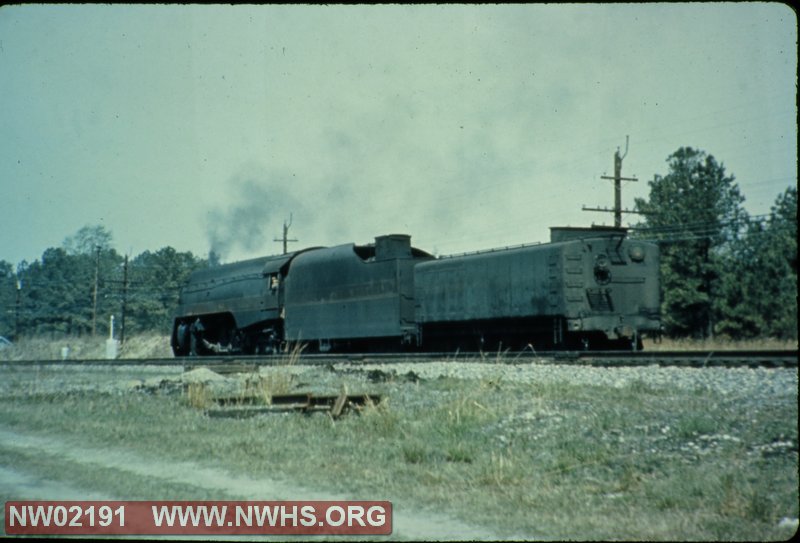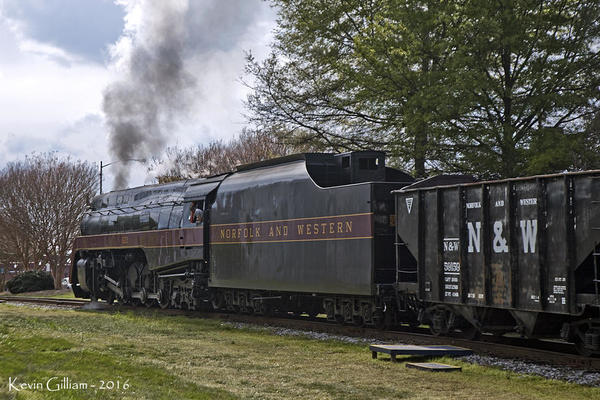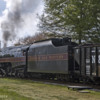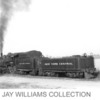Did any railroad regularly use an auxialiary water tender or tank car with their steam locomotives?
Replies sorted oldest to newest
Tommy posted:Did any railroad regularly use an auxialiary water tender or tank car with their steam locomotives?
Yes.
The N&W was probably the biggest user of "canteens".
.......as did CPR, CNR, Burlington, IC, D&RGW, NP, MoPac, CGW, PRR (where water facilities had been removed - end of steam era), NYC (in Canada), C&S, FW&D, GN, B&O, DM&IR, D&SL, SP.
Big Jim posted:The N&W was probably the biggest user of "canteens".
Interesting terminology. Is "water bottle" also a term used on real RRs or is that a toy train term?
Overland did the D&RGW auxiliary water car.......used behind L131/132 and L/95/96 2-8-8-2's
MartyE posted:Big Jim posted:The N&W was probably the biggest user of "canteens".
Interesting terminology. Is "water bottle" also a term used on real RRs or is that a toy train term?
Never heard that one, but, you know how railfans make up their own terms.
Suspect Illinois Central was a close second to N&W in use of auxiliary water cars. And probably for the same reason: not stopping for water accelerated freight train speed and increased tonnage, as starting heavy freight trains was a slow, laborious process, that sapped horsepower. Recall that steam locomotive peak horsepower was reached at a MPH perhaps 10 MPH less then driver diameter. A lot more work was accomplished at that speed.
Numerous pictures are extant showing IC 4-8-2's, 2-10-2's and 2-8-2's with water cars, highballing mainline manifests and coal trains, as well as secondary lines covered by 2-8-2's.
You made me look. It had to be at the very end of the steam era. Here's a pic of the N&W 612 J sporting not only an auxiliary water tender, but a doghouse too. Sad, dirty end for a beautiful locomotive.

The little narrow gauge railroad, The Uintah Railway, had built 7 rectangular steel water cars. (I have a G-gauge Uintah #021 water car for my #50 Mallet pulled gilsonite train.)
By 1939 six of these up for sale, 017-021 and 023. In May 1940 D&RGW bought all six to run on their narrow gauge, renumbering them 0465 thru 0470.
Big Jim posted:MartyE posted:Big Jim posted:The N&W was probably the biggest user of "canteens".
Interesting terminology. Is "water bottle" also a term used on real RRs or is that a toy train term?
Never heard that one, but, you know how railfans make up their own terms.
Actually "water bottle" was a B&O term for a canteen or auxiliary tender. They were converted tank cars.
Used mainly on the Wheeling Division in the last years of steam.
See JJ Young's classic article in the Winter 1976 issue of Railfan Magazine.
Last time I looked, 611 still had her doghouse "feet".
I actually remember seeing the Southern Railway, use an Single Done Tank car behind the 4501 in the Early 60's, before they acquired an former N&W Auxiliary Tender, the picture is in the 4501 Book that was published by Kalmback publishing.
I love this image. One guesses the mail contract was the last customer on the branch. How to make it work? Use a worn out ancient 10-wheeler, shut down the infrastructure down the branch, stack up the coal (like 765 did a couple of years ago) and drag along your water supply! Making it work!
Source for the photo is http://www.rrpicturearchives.n...ture.aspx?id=1437245
1956, Courtright, ON.
More information on this 56 year old locomotive and the environs here:
https://en.wikipedia.org/wiki/...entral_1290_and_1291

On the 765, we call it the "A Tank." (Auxiliary Tank)
As for that horrible, purple picture above, I wonder why no one fixed it in Photoshop before posting that awful thing...
Attachments
The July 1987 "Model Railroader" featured excellent drawings of an Illinois Central 1500-series 2-8-2, including it's auxiliary water car ("cistern" to IC engine men). These cars were also used with IC 4-8-2's and 2-10-2's ("Centrals", in IC parlance)










